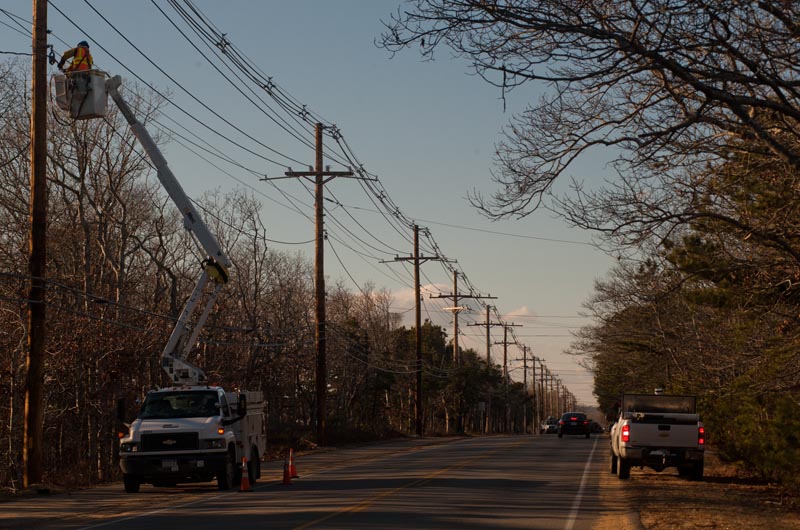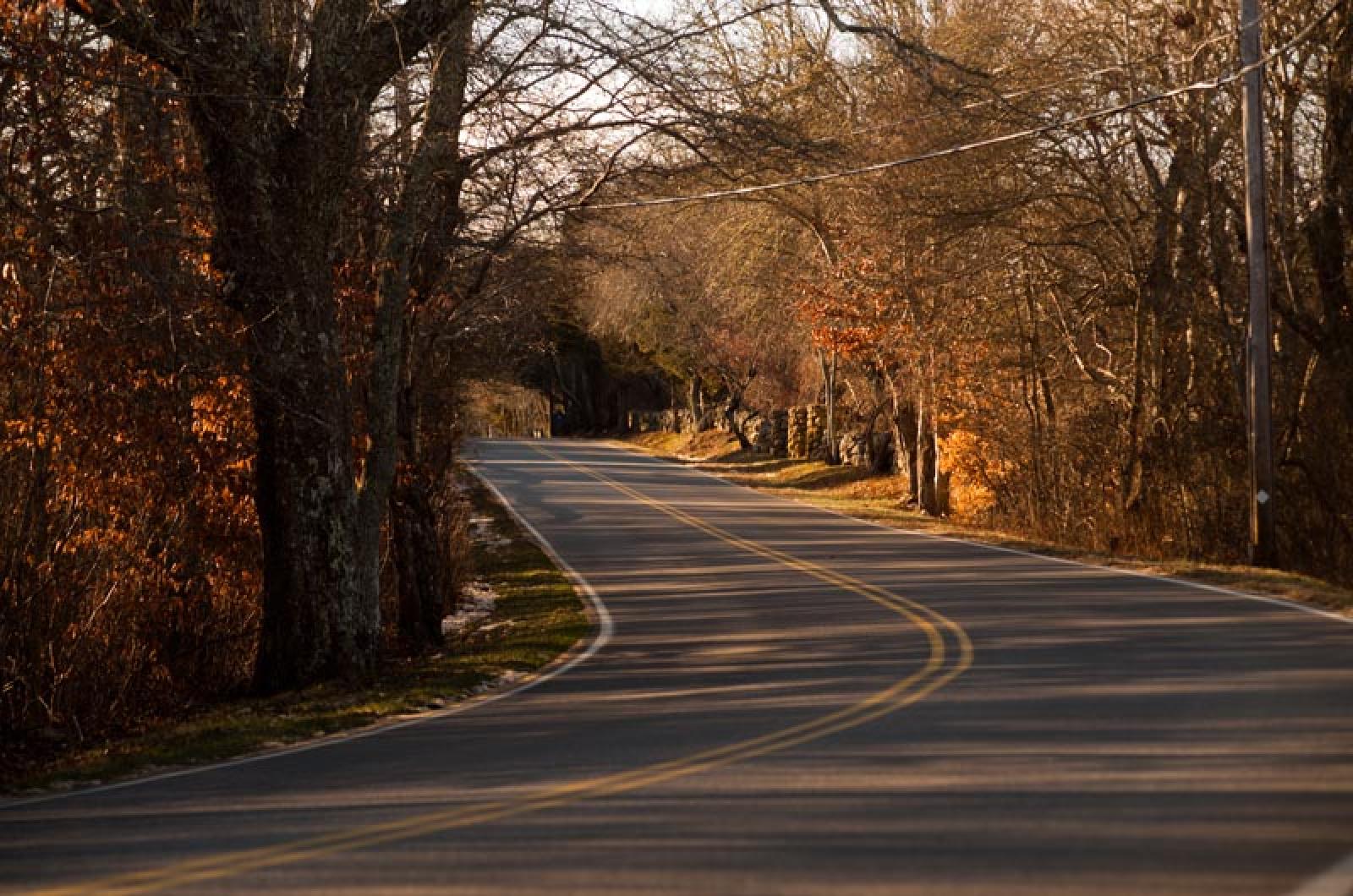Craig Whitaker has delighted in the treelined roads that cut through the national parks. He’s marveled at the winding roads of the San Juan islands off Washington state.
Mostly though, he’s admired the rural roads of Martha’s Vineyard, where he owns a home and lives part-time.
The first time he set foot on the Island he remembers riding along North Road, a winding road lined with a canopy of oaks. Through the branches, Mr. Whitacker could see the glow of a full moon.
“We had been thinking for sometime about having a place on the Cape, and we sat in the backseat of the car and said, this is it,” Mr. Whitaker recalled during a recent meeting of the All-Island selectmen.
But over the years, Mr. Whitaker has witnessed a loss of that rural character. An architect by profession, he has frowned at the widening of roads, the increasing tendancy to pave shoulders, the construction of towering telephone poles and the proliferation of signs.
So he began to take an inventory of what he calls the “good and the ugly” of Vineyard roadscapes. He researched comparable communities who have succeeded in preserving and enhancing the rural character of their road aesthetic. He found many examples, including Nantucket,
He completed the research in collaboration with the Project for Public Spaces, a nonprofit organization that remodels public spaces nationwide.

His ugly list includes paved shoulders and metal guardrails, the Tashmoo Overlook pullout and the Oak Bluffs roundabout, which replaced the blinker this year. “My concern is that it suburbanized the place,” he said. “That’s the bad word in all of this.”
Vineyard roads, he says, are starting to lose their distinctiveness. “It isn’t Darien, it isn’t Scarsdale,” he told the Gazette in an interview. “It’s rural.”
The remedy, according to Mr. Whitaker, is a thoughtful consideration of roadway aesthetics to improve the face of the Island, which he says is important to the local economy.
“This is a chance to be proactive,” he said.
He hopes that it will be a community collaboration in which the Martha’s Vineyard Commission, town governments and the state highway officials would work together to develop a rural roads manual, a set of published guidelines that define Island roadside aesthetics. They would define the widths of roads, set utility pole height, and even establish a uniform design and size for signage.
“It is a resource protection,” he explained to the selectmen at their December meeting. “Something for the Vineyard that would be a way to protect its road character.”
Towns can also apply for a scenic byway designation from the state. The Chappaquiddick Road is already registered as a scenic byway which makes it eligible for federal funding under the National Scenic Byways Act.
A scenic road designation, as established in chapter 40 of Massachusetts General Law, allows for no repair, maintenance, reconstruction or paving work without the consent of the town planning board.
In 1994, Nantucket developed a set of road design guidelines, which establish a series of recommendations for roadside architecture, and other elements.
On the Island, the effort may be well-timed. Rural roads is one of a list of issues a new commission committee on NStar is set to discuss in the new year, as well as herbicide use and telephone pole aesthetics. Also, the Edgartown-Vineyard Haven Road, widened in 1997, is slated for repaving in 2015.
Mr. Whitaker showed the group a photograph of a segment of the Edgartown-Vineyard Haven Road, which he had altered using Photoshop. In the picture he narrowed the road and planted grass along the shoulder.
“It would make sense if we were able to chart our own road destiny,” he said.






Comments (11)
Comments
Comment policy »